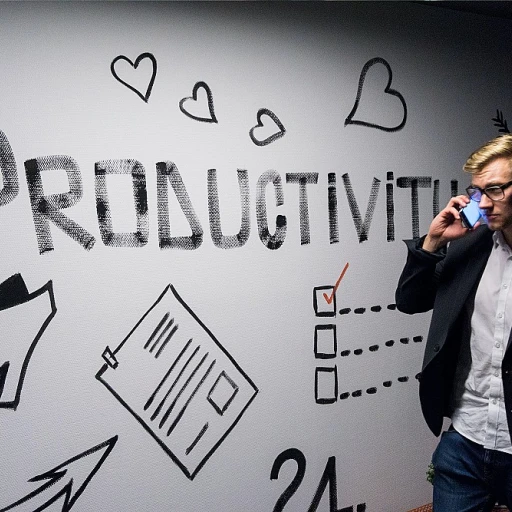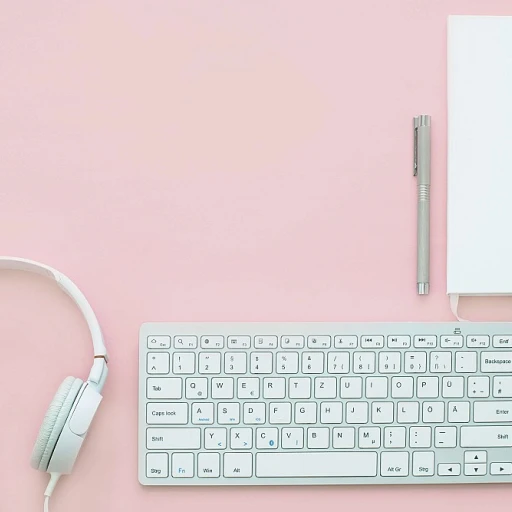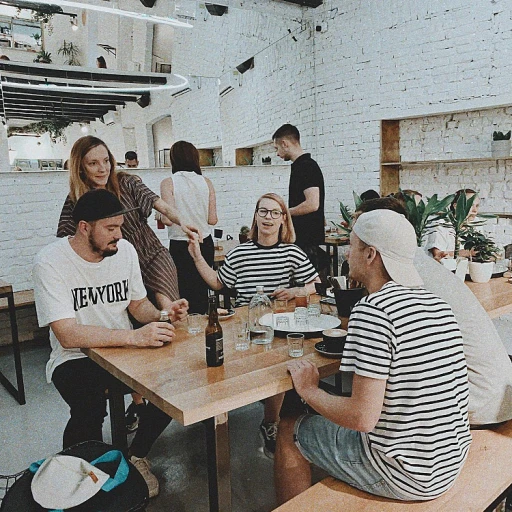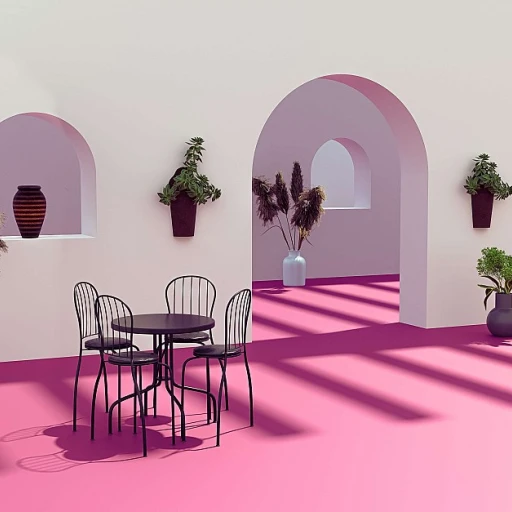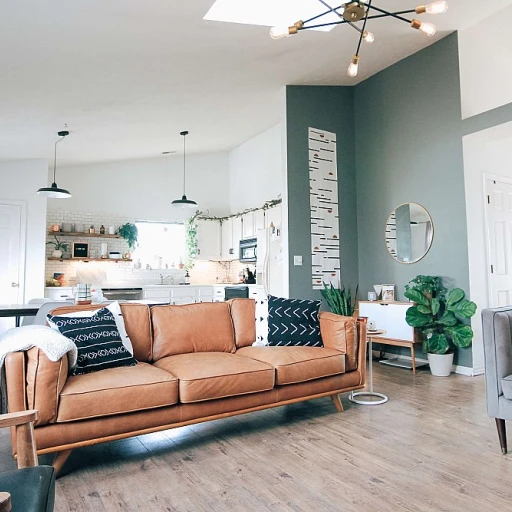
Adapting to Remote Work in Design
Embracing the Shift to Remote Design Work
The transition to remote work has significantly impacted the design industry, reshaping how designers and teams operate. As offices become less central to daily operations, designers are finding new ways to adapt and thrive in this evolving landscape. The shift to teletravail has opened up a world of opportunities, allowing designers to work from anywhere, whether they are a senior product designer, a motion designer, or a brand designer.
Remote work offers flexibility and the chance to tap into a global talent pool. This is particularly beneficial for senior designers and product designers who can now collaborate with diverse teams across different time zones. However, adapting to this new mode of work requires a strategic approach to maintain productivity and creativity.
Redefining the Design Workspace
Designers must now create their own conducive work environments at home. This involves setting up a dedicated workspace that minimizes distractions and promotes focus. Whether you're a graphic designer or a web design engineer, having a well-organized space can enhance your efficiency and creativity.
Moreover, the shift to remote work necessitates a reevaluation of tools and technologies. As discussed in other sections, leveraging the right tools is crucial for effective collaboration and communication in a virtual world. Designers need to stay updated with the latest software and platforms that facilitate seamless interaction and project management.
Navigating the Challenges of Remote Design
While remote work offers numerous benefits, it also presents challenges. Maintaining a work-life balance can be difficult when your home becomes your office. Designers must establish clear boundaries to prevent burnout and ensure they remain productive and motivated.
Additionally, fostering creativity in a remote setting requires intentional effort. Designers need to find ways to stay inspired and connected with their teams, which is further explored in the section on maintaining creativity while working remotely.
For more insights on how to navigate these changes and understand the consumer's journey in design, you can explore this resource.
Tools and Technologies for Remote Design
Essential Tools for Seamless Online Creation
Transitioning into remote work can be challenging for design teams, particularly when it comes to sourcing the right tools that allow a smooth adaptation from in-office collaboration to remote innovation. Embracing technologies that streamline the design process while enhancing collaboration can bridge the gap and maintain efficiency.- Cloud-Based Design Tools: Platforms like Figma and Adobe Creative Cloud offer features that cater to real-time collaboration and design management. This enables designers to access their work from anywhere, encouraging creative freedom while ensuring version control and accountability.
- Communication Applications: Efficient communication is pivotal for successful remote operations. Implementing tools such as Slack or Microsoft Teams helps create virtual spaces for integrated communications, where team updates and design feedback can be shared instantly.
- Project Management Solutions: Organized task management is crucial when working remotely. Utilizing platforms like Asana or Trello can help keep track of project timelines, responsibilities, and milestones.
Maintaining Creativity While Working Remotely
Fostering Innovation in a Remote Setting
One might wonder, can creativity truly thrive when designers are separated by screens and distance? It’s a legitimate concern, especially given the spontaneous bursts of inspiration that often arise when teams huddle together in a vibrant studio. However, remote work brings a unique set of advantages that can stimulate creative outcomes.
First, remote work grants designers the flexibility to work in environments that are most conducive to their individual creative processes. Whether it's the comfort of home, a quaint cafe, or nestled in nature, diverse environments can spark novel ideas that may not surface in a traditional office space.
Moreover, leveraging the right digital tools is pivotal. Whether it's brainstorming with mind-mapping software, sketching ideas on a tablet, or using advanced design software like Procreate or Photoshop, these technologies facilitate the seamless expression and sharing of creative concepts. They bridge the geographical gap and allow designers to communicate their vision effectively.
In this virtual context, setting clear timelines and goals is essential. Remote workers must be disciplined in managing their time to carve out blocks solely dedicated to creative exploration, free from the distractions that might accompany a home office setting.
Additionally, embracing a new type of leadership that values innovation over routine can help maintain the creative edge. Encouraging risk-taking and celebrating unique perspectives can foster a vibrant, virtual creative community. This collaborative effort to keep creativity alive ensures that the essence of design remains intact, whether teams are seated together or miles apart.
Collaboration and Communication in a Virtual World
Fostering Effective Virtual Team Dynamics
The transition to remote work has pushed many design teams to rethink how they collaborate and communicate. While technology can facilitate these interactions, fostering genuine team dynamics in a virtual space is crucial. One effective way to enhance virtual communication is by leveraging dedicated design collaboration tools and platforms. By introducing tools that provide real-time feedback and allow for seamless idea sharing, teams can mimic in-person brainstorming sessions. This not only keeps everyone engaged but also ensures that design ideas are communicated effectively. In remote settings, clarity is paramount. Ensuring that all team members have access to updated project files and clear task allocations helps avoid potential miscommunications. Regular virtual meetings can serve as a space for team members to share their progress and align on project goals. However, moderation is key; excessive meetings may lead to fatigue and reduced productivity. Implementing strategies for effective communication includes encouraging open feedback and facilitating asynchronous collaboration. When individuals feel their inputs are valued, they are more likely to contribute meaningfully, leading to better team cohesion. Leveraging technology effectively while nurturing human-centric connections can transform virtual teams into a high-performing unit, making remote work in design as efficient and innovative as on-site interactions.Balancing Work and Personal Life
Finding Balance Between Professional and Personal Realms
In the realm of design, achieving a harmonious balance between work and personal life is crucial, especially when operating in a remote environment. The boundaries between these two worlds can blur, leading to stress and burnout if not managed effectively. One way to maintain this balance is by setting clear boundaries. Establishing a designated workspace separate from personal areas can aid in mentally distinguishing work time from personal time. It's essential to set specific work hours and stick to them to prevent work from spilling into personal life. Furthermore, embracing flexible scheduling can be beneficial. This approach allows you to work during the hours when you are most productive, thereby enhancing efficiency and freeing up time for personal pursuits. Another aspect to consider is fostering a supportive environment that promotes well-being. Encouraging breaks throughout the day, whether to recharge or engage in a non-work-related activity, can significantly improve your mental health and job satisfaction. Also, technology plays a vital role. Utilizing project management tools to schedule tasks can help in organizing daily activities, ensuring tasks are completed efficiently without encroaching on personal time. Indeed, while the allure of a remote design career is undeniable, maintaining a healthy balance between professional and personal spheres is fundamental for a sustainable and fulfilling work experience.Future of Remote Work in Design
The Evolution of Remote Work in Design
The future of remote work in design is not just a trend; it's a transformation. As we move forward, the traditional office environment is being redefined, offering designers more flexibility and opportunities to innovate from anywhere. This shift is particularly beneficial for roles like senior product designers, motion designers, and brand designers, who can leverage remote settings to enhance their creative processes.
One of the key drivers of this evolution is the advancement in tools and technologies that support remote design work. These tools enable seamless collaboration and communication, allowing teams to work effectively across distances. As a result, designers can engage in complex projects without the constraints of a physical office, leading to a more dynamic and inclusive work environment.
Moreover, maintaining creativity while working remotely has become a focal point for many design teams. By fostering a culture that encourages experimentation and innovation, companies can ensure that their designers remain inspired and productive, regardless of their location. This approach not only enhances the quality of design work but also contributes to a more fulfilling work experience for designers at all levels, from junior to senior.
As we look to the future, the balance between work and personal life will continue to be a priority. Remote work offers the flexibility to manage both effectively, which is crucial for sustaining long-term productivity and job satisfaction. Companies that embrace this balance will likely see a positive impact on their teams' morale and output.
In conclusion, the future of remote work in design is bright and full of potential. By adapting to new technologies, fostering creativity, and prioritizing work-life balance, the design industry can thrive in this new era of remote work. As more design emplois and offres become available, the opportunities for designers to excel in a remote setting will only continue to grow.



